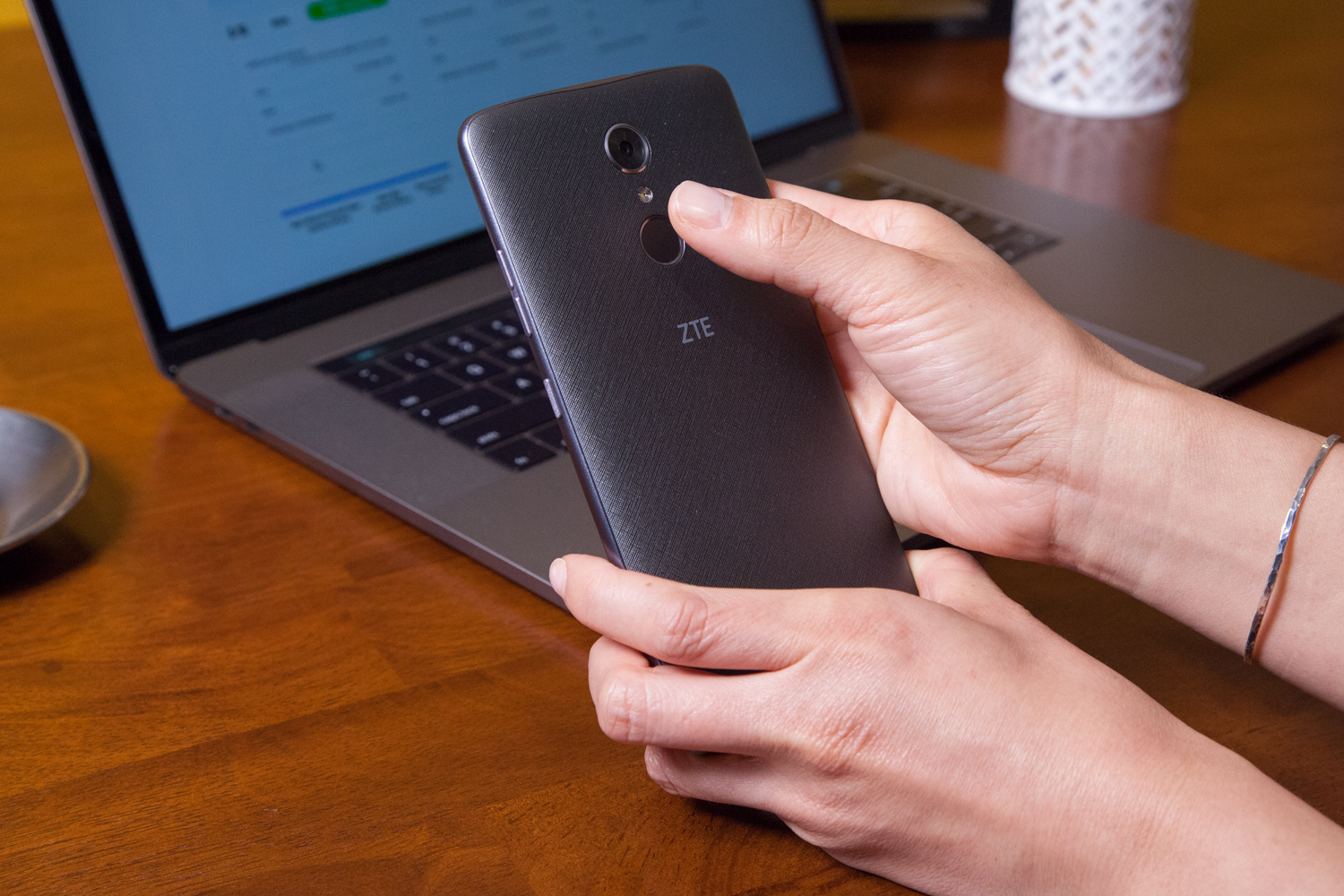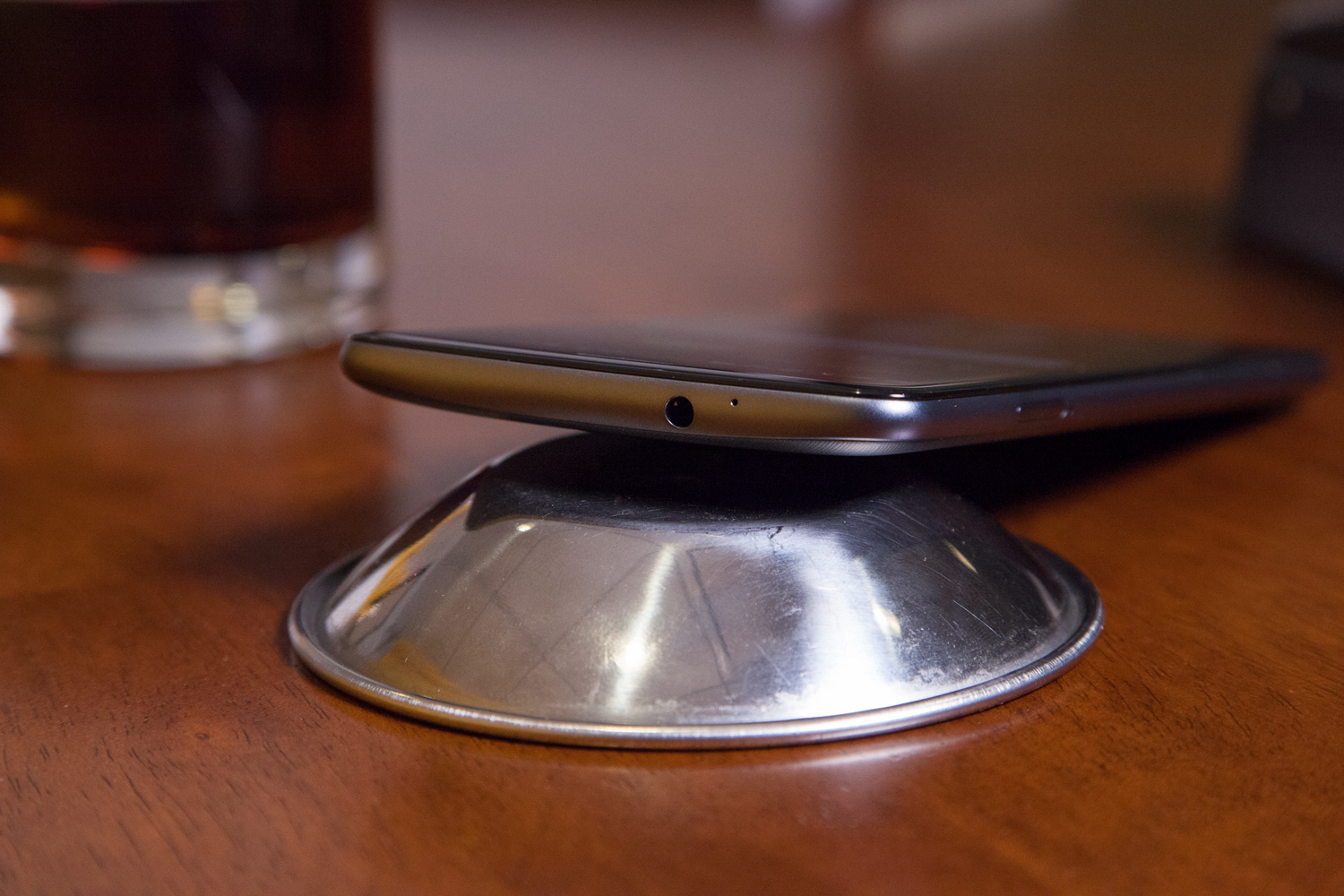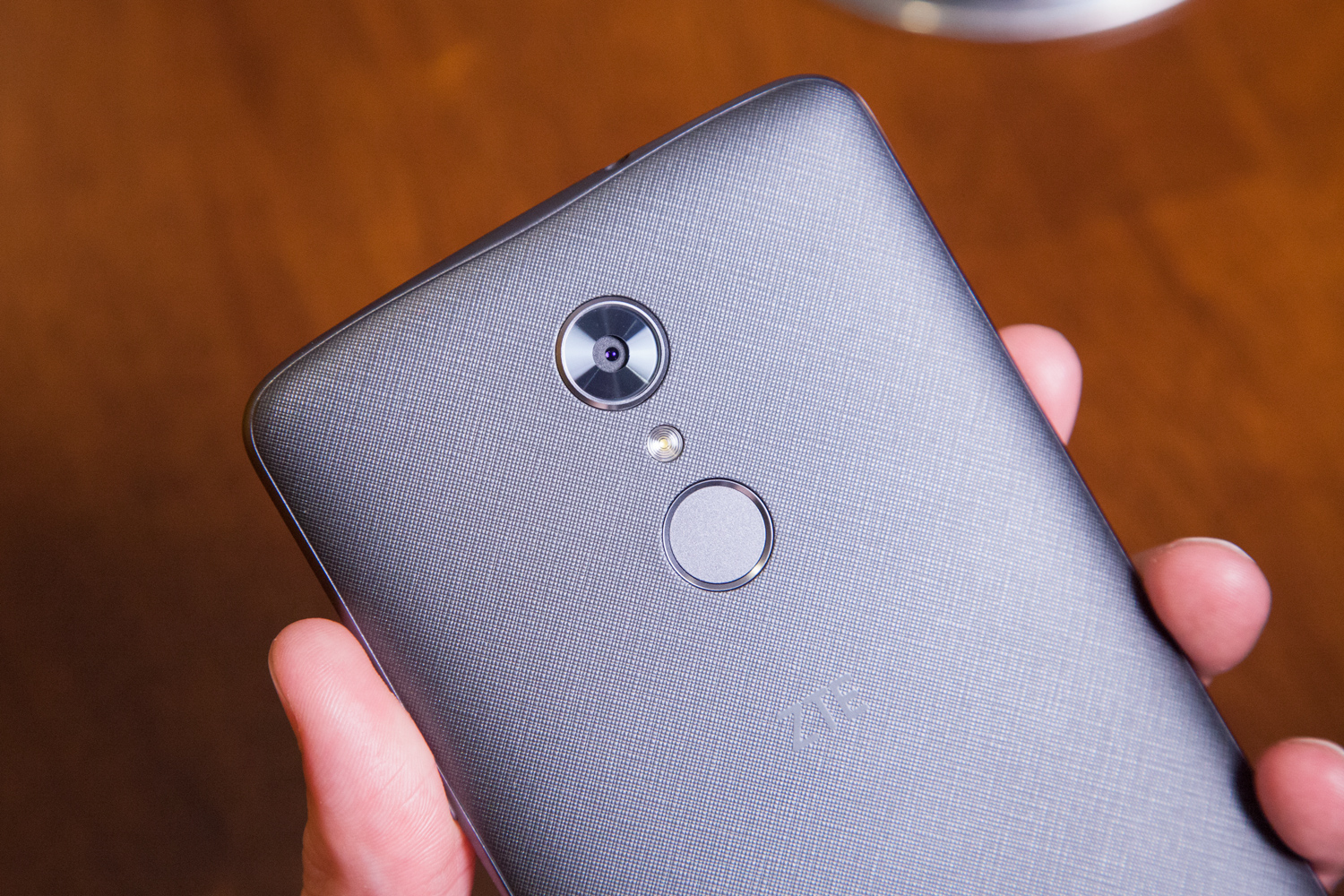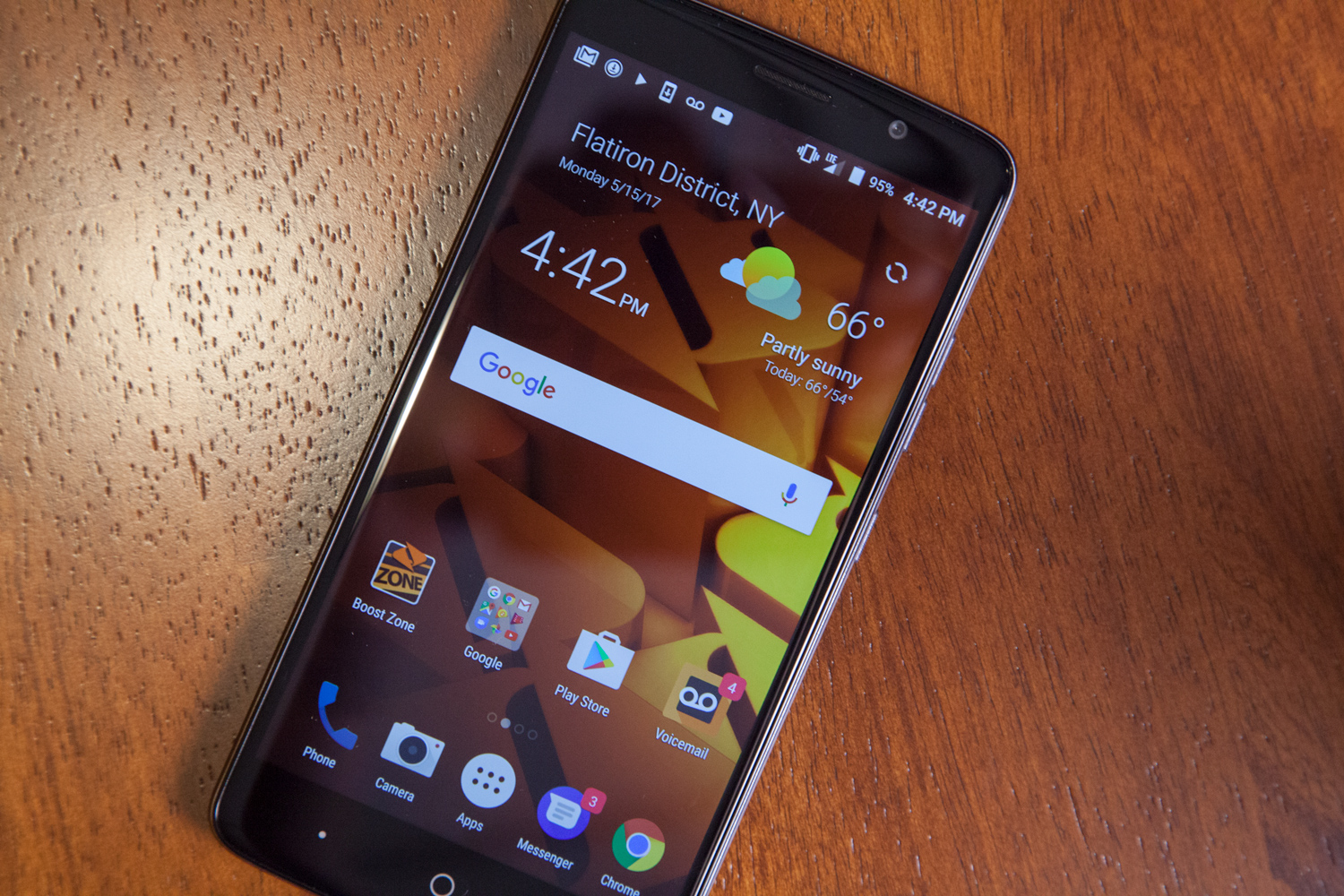Tom's Guide Verdict
The ZTE Max XL is a fantastic big-screen phone for budget-conscious buyers on Sprint, Boost and Virgin Mobile.
Pros
- +
Sub-$100 price tag
- +
Big and bright 6-inch full-HD screen
- +
USB-C port and headphone jack
Cons
- -
Weak speakers
- -
Lots of bloatware
- -
Available only on Sprint, Boost and Virgin Mobile
Why you can trust Tom's Guide
It wasn't long ago when buying a phone for around $100 would leave you with an ugly, janky mess that was fated to become a paperweight in a year’s time. Phones like the ZTE Max XL are changing that impression. On top of being a well-built device, ZTE’s budget phone offers specs and features that previously weren't available in this price range.













This phone has a big, bright 6-inch full-HD screen, a built-in fingerprint sensor and a massive 3,990 mAh battery that lasts longer than a lot of flagship devices. It even comes with Android 7.1, so you won't miss out on handy features like the Google Assistant or multiwindow mode — something that's exceedingly useful on a screen this big.
The biggest bummer about the ZMax XL? It’s not available on more networks, as the phablet is limited to prepaid providers Boost and Virgin, as well as Sprint.
Specs and Availability
Here’s what you’ll get from the ZTE Max XL, and how those specs compare with the specs of other recent budget devices.
| ZTE Max XL | Blu R1 Plus | Moto G5 Plus | |
|---|---|---|---|
| Price | $100 to $130 (depending on carrier) | $160 | $230 |
| Display | 6-inch 1920 x 1080 LCD | 5.5-inch 1280 x 720 LCD | 5.2-inch 1920 x 1080 LCD |
| OS | Android 7.1 | Android 6.0 | Android 7.0 |
| CPU, RAM | Snapdragon 435, 2GB RAM | Mediatek MT6737, 2GB RAM | Snapdragon 625, 2/4GB RAM |
| Storage | 16GB or 32GB (Sprint) | 32GB | 32GB or 64GB |
| Cameras (Rear/Front) | 13-MP / 5-MP | 13-MP / 5-MP | 12-MP / 5-MP |
| Size and weight | 6.44 x 3.25 x 0.375 inches7.25 ounces | 6.02 x 3.02 x 0.41 inches6.74 ounces | 5.91 x 2.91 x 0.38 inches5.46 ounces |
| Battery Life (Hrs:Mins) | 11:53 | 10:36 | 11:31 |
You can pick up the Max XL for $99 if you buy it directly from Boost or $119 if you go through Virgin Mobile. Best Buy and Amazon both carry carrier-locked versions of the phone for $130. As of June 9, Sprint added the Max XL at $192, but you can break that into monthly payments of $8 over 24 months if you don't care to buy the phone outright.
What’s Good About the Max XL
One of the Max XL’s most appealing features is its big 6-inch screen. At 560 nits, its peak brightness is far brighter than such similarly priced phones as the Blu R1 Plus (364 nits). And because the Max XL’s screen features a full-HD resolution, instead of the 1280 x 720 display on Blu R1 Plus, pictures and videos look much sharper, too.
The 3,990 mAh battery in the Max XL is a beast. On the Tom's Guide Battery Test (continuous web surfing on Boost 4G LTE), the Max XL lasted 11 hours and 53 minutes, which lands it in the top 10 on our list of the longest-lasting smartphones, just ahead of the more expensive Moto G5 Plus. In comparison, the Blu R1 Plus lasted almost an hour and a half less at 10:36.
Get instant access to breaking news, the hottest reviews, great deals and helpful tips.

Around back, the Max XL's fingerprint button is a nice touch. It's easy to reach, works fast every time, and it's something you won't find on a lot of phones that cost less than $200.

On the performance front, the Max XL's Snapdragon 435 held up pretty well, too, in real-world use. When I played a few rounds of Hearthstone, which is graphically demanding, I noticed a fair bit of lag. But when I trained my hapless Pokémon in the less-taxing Magikarp Jump, gameplay was smooth and fluid.

The Max XL also recorded a respectable performance on synthetic tests such as GeekBench 4, which measures overall system performance. The Max XL scored 1,865, versus 1,583 for the Blu R1 Plus. However, when compared with the Moto G5 Plus, there was a pretty big gap between the Max XL and the Snapdragon 625-powered G5's score of 3,746.

I also appreciate that the Max XL features touch-capacitive buttons, even though they’re starting to go out of style. Because of those buttons, there's no navigation bar at the bottom of the Max XL’s screen to detract from that big 6-inch display. The Max XL's USB Type-C port is another thoughtful inclusion, as it ensures the phone won't feel as dated as microUSB starts to fade away.
MORE: Best Smartphones
What’s Bad About the Max XL
There's not much to dislike about the Max XL, but its biggest downside is that it's available only on Sprint, Boost and Virgin Mobile, so if you're hunting around for phone to use on AT&T or T-Mobile or even another CDMA-based network like Verizon, you're out of luck.

ZTE made some unfortunate design decisions that include a mediocre rear-mounted speaker that pushes audio away from your ears instead of toward them.
I'm not a big fan of all the bloatware that came preinstalled on our Boost Mobile review unit, either. There are 10 unnecessary Boost Mobile apps along with other bloat that ranges all the way from the airG social media service to the Zoosk dating app (whatever those are).

While I don't mind a plastic back, especially on a phone priced this low, the subtle crisscross texture feels a bit cheap. In general, I think the Max XL is a step backward in the looks department when compared to last year's ZTE ZMax Pro. I also can't stand that you need to long-press to unlock the Max XL's screen. Swipe to unlock is so much faster and easier, but, unfortunately, there's no option for that.
MORE: Best Apps - Top-Rated Apps for Android & iOS
How the Cameras Perform
Since the camera on smartphones is often the only one that people use, we wanted to take a closer look at what kind of pictures the Max XL produces. Starting with the 13-megapixel camera in back, the Max XL clearly outshot the Blue R1 Plus when I took a picture of some flowers in bright light. The Blu R1 Plus' photo is completely oversaturated and blown out, which causes the flower to look like a bright pink blob. Meanwhile, even though the Max XL's shot isn't perfect, you can make out the shape of individual petals and and see details like the pistils in the center of the flower.
Indoors, things were much closer, and I actually prefer the Blue R1 Plus' shot over the Max XL's photo, as the former features slightly better dynamic range. Note the difference between the shadows on the purple wall and the highlights on the fake fruit. The R1 Plus photo also offered slighter warmer and richer colors on the decorations on both sides.
At night, the Max XL took the lead again with a cityscape that was just a tad sharper and less grainy the what the Blu R1 Plus captured, although there's clearly a lot of room for improvement.
As for the front camera, the Max XL's 5-MP selfie cam can snap a pretty decent pic, showing sharp details in my hair and face. However, the bright sky caused the Max XL's pic to become slightly overexposed.
MORE: 15 Best Android Camera Apps
Bottom Line
What the Max XL delivers for around $100 is really quite impressive, and it makes competing phones like the Blu R1 Plus look pretty poor in comparison. Sure, you can spend an extra $100 and upgrade to our current favorite budget phone, the Moto G5 Plus, getting a nice aluminum chassis, better performance and a faster camera. But the Max XL is so good that you might not want to — especially if you value the ZTE's bigger screen and slightly longer battery life.
Photo Credit: Shaun Lucas/Tom's Guide. Sample Photos: Sam Rutherford/Tom's Guide
Sam is a Senior Writer at Engadget and previously worked at Gizmodo as a Senior Reporter. Before that, he worked at Tom's Guide and Laptop Mag as a Staff Writer and Senior Product Review Analyst, overseeing benchmarks and testing for countless product reviews. He was also an archery instructor and a penguin trainer too (really).
-
redshirt58 What? No mention if the monster battery I'd removable?Reply
After getting burned with Samsung Note 4 that became finicky, then ultimately dying, one of THE most important buying factors for me is STILL having a removable battery. When a phone locks up completely AND is in an apparent high-power consumption mode (symptom: HOT battery), I need a way to shut the darn thing OFF & restart!
